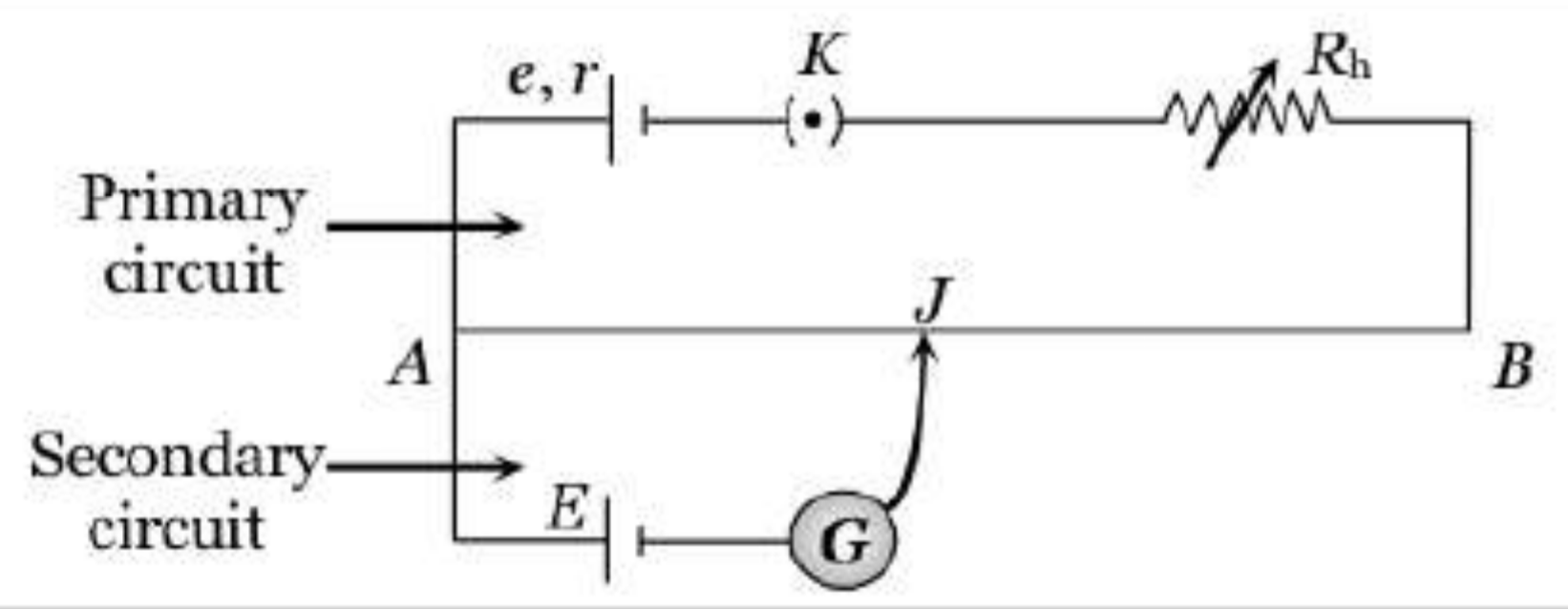In the following circuit involving a potentiometer;
Assume V$V$ to be the voltage produced by the cell in the primary circuit across the length AJ$AJ$ of the potentiometer wire, and E$E$ to be that produced by the cell of the secondary circuit.
In the case of V=E$V=E$, it's known that there is zero current through the secondary circuit. The current would obviously follow the path of the potential drop and not the rise, but in this limiting case, why is there current flow through the potentiometer wire instead of the secondary circuit, when the potential drops are similar in both?

